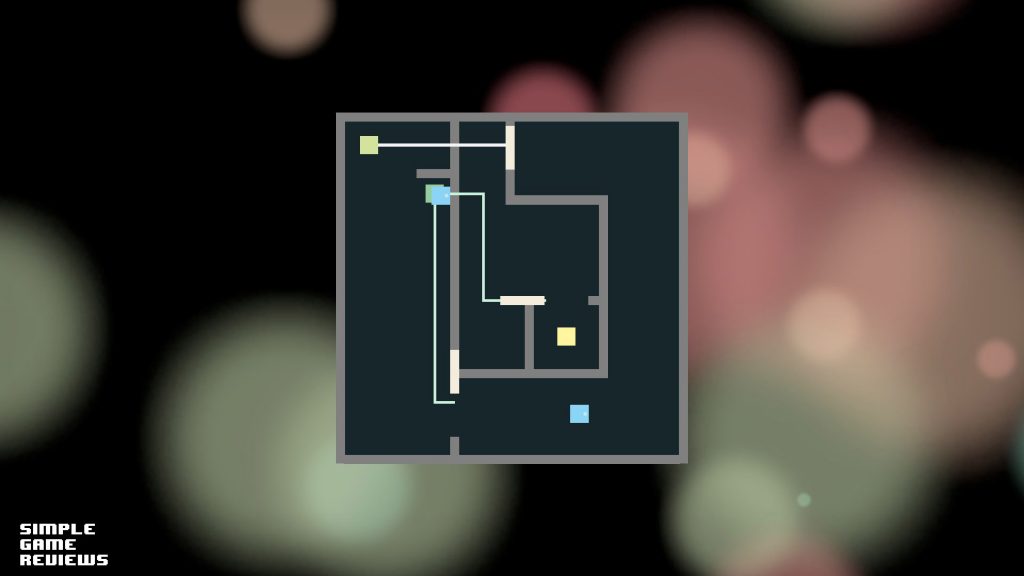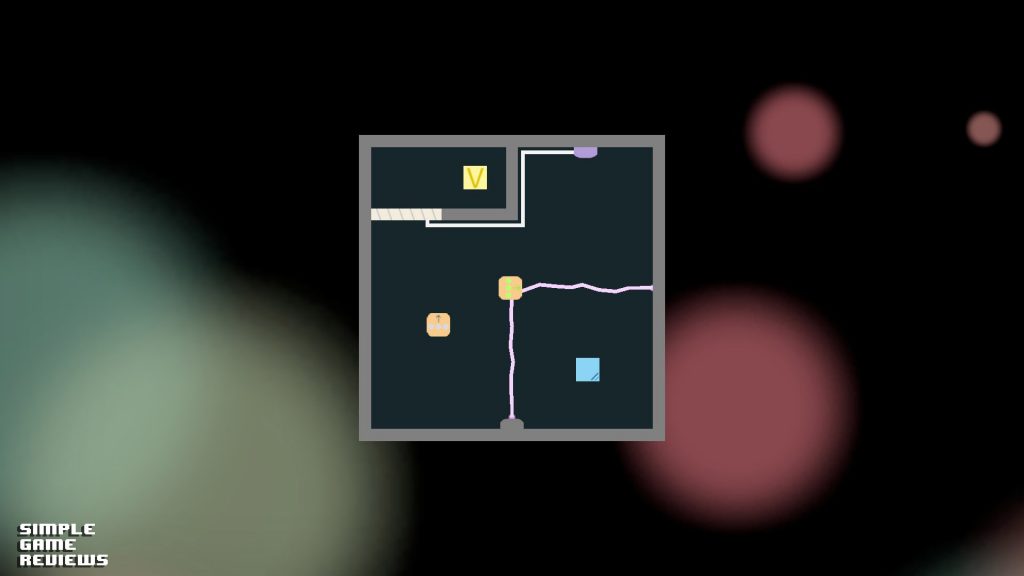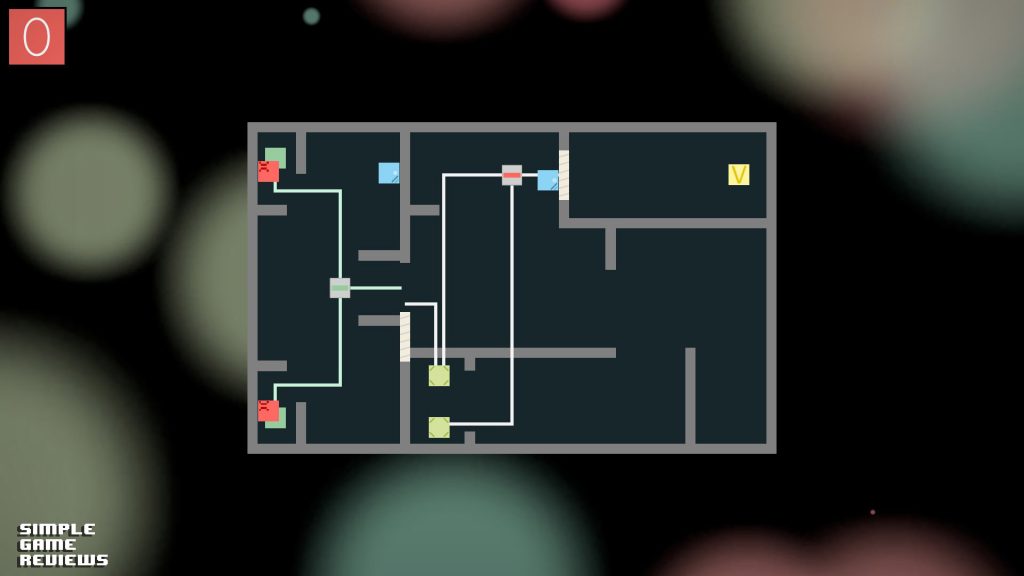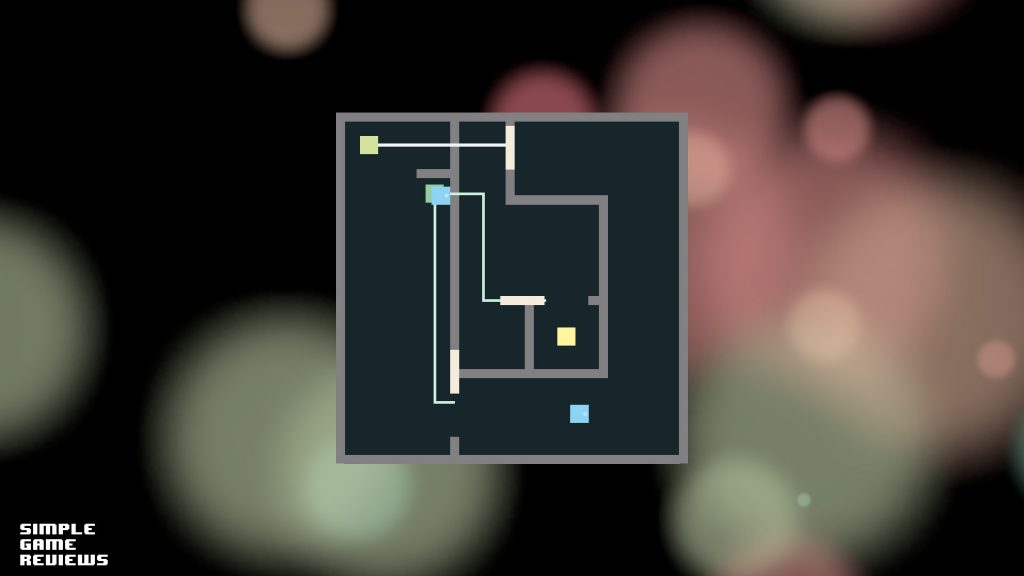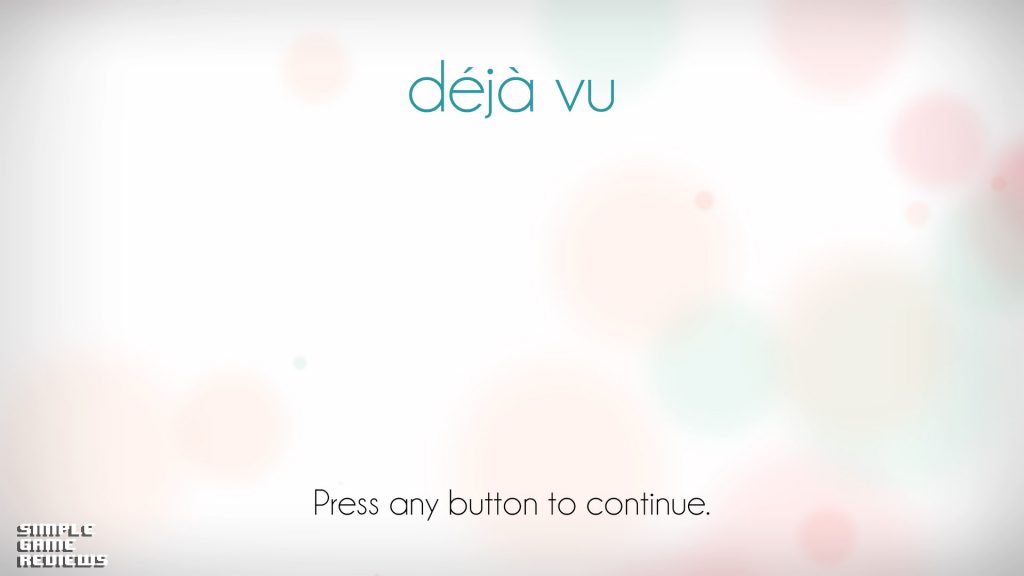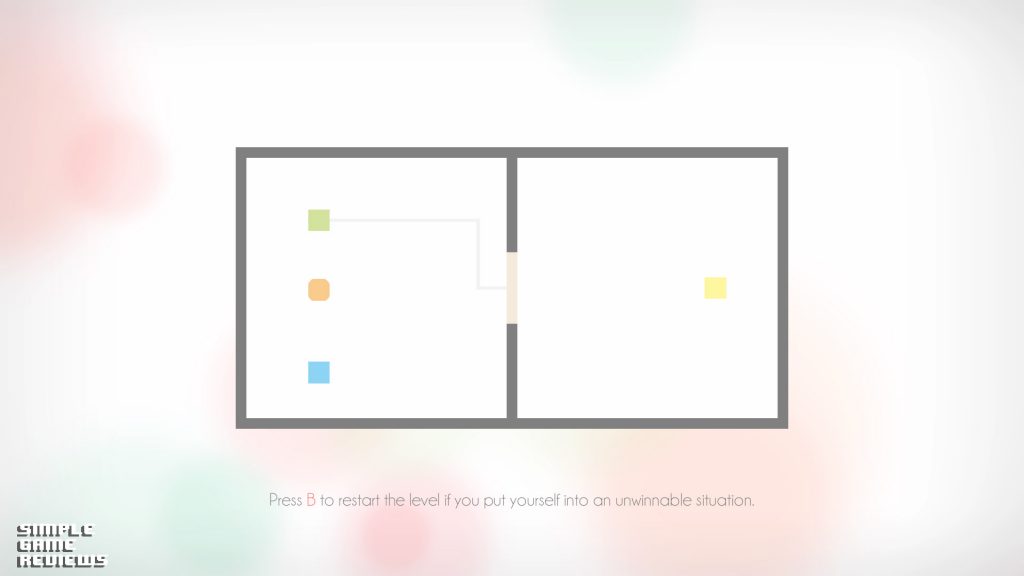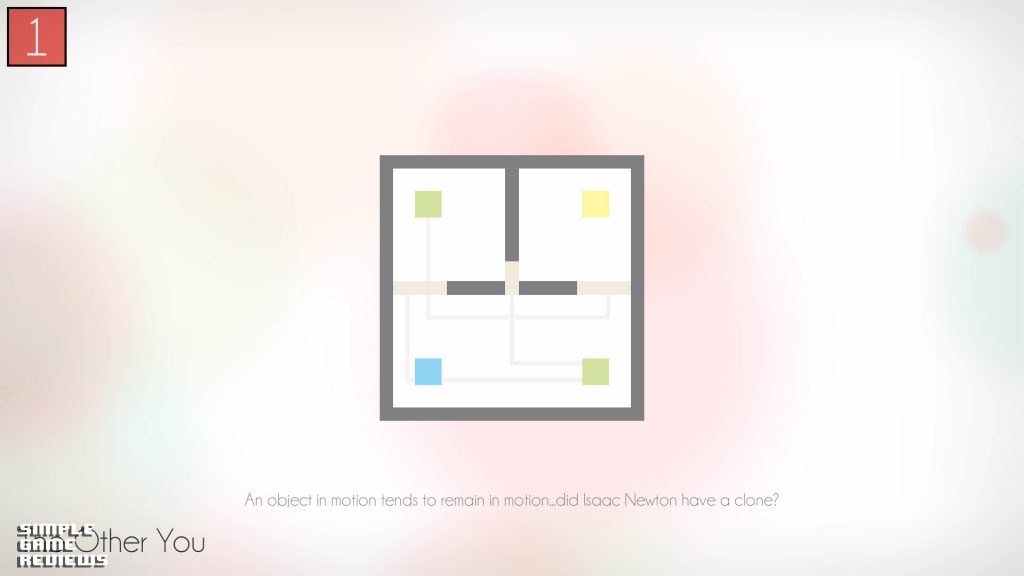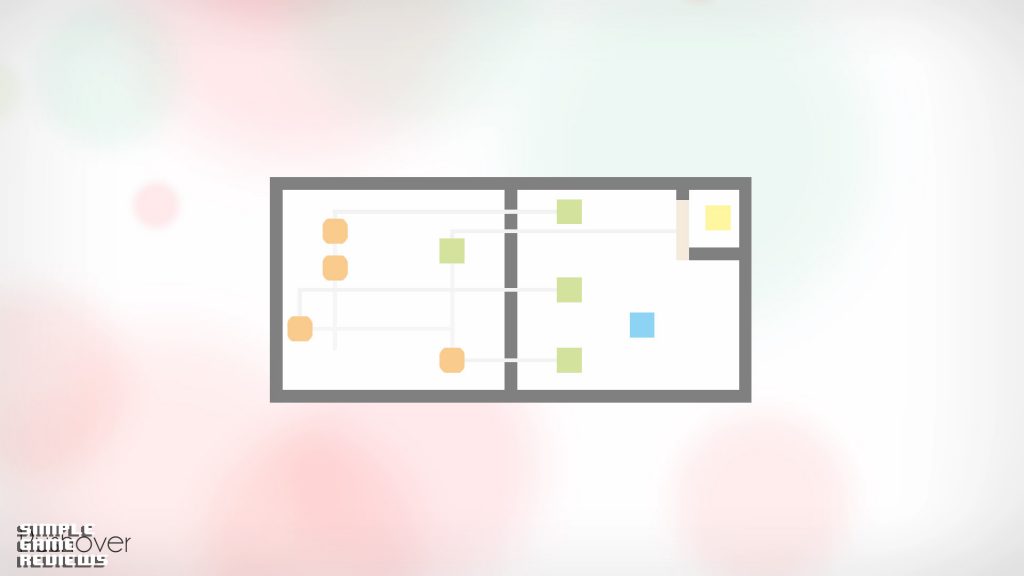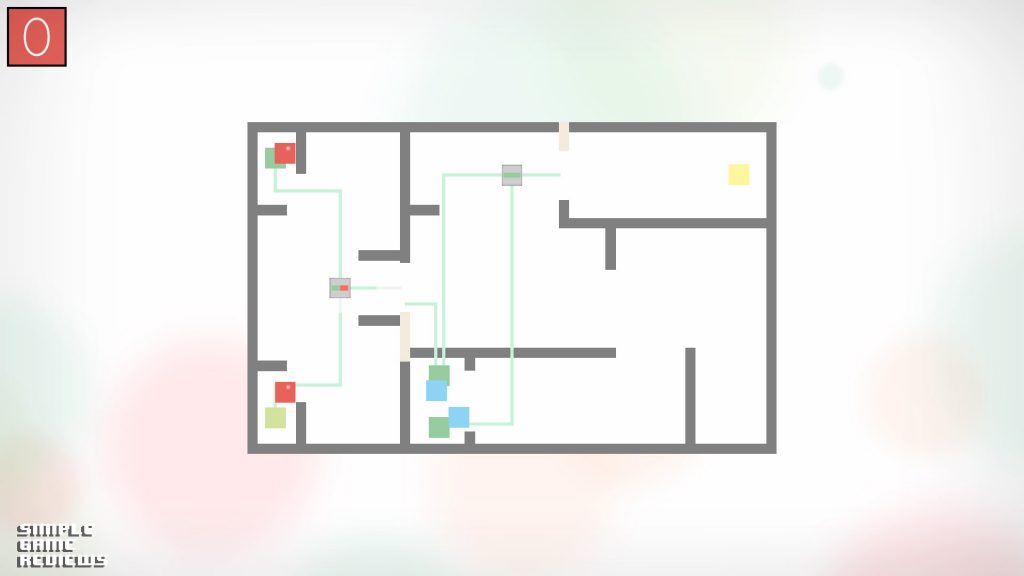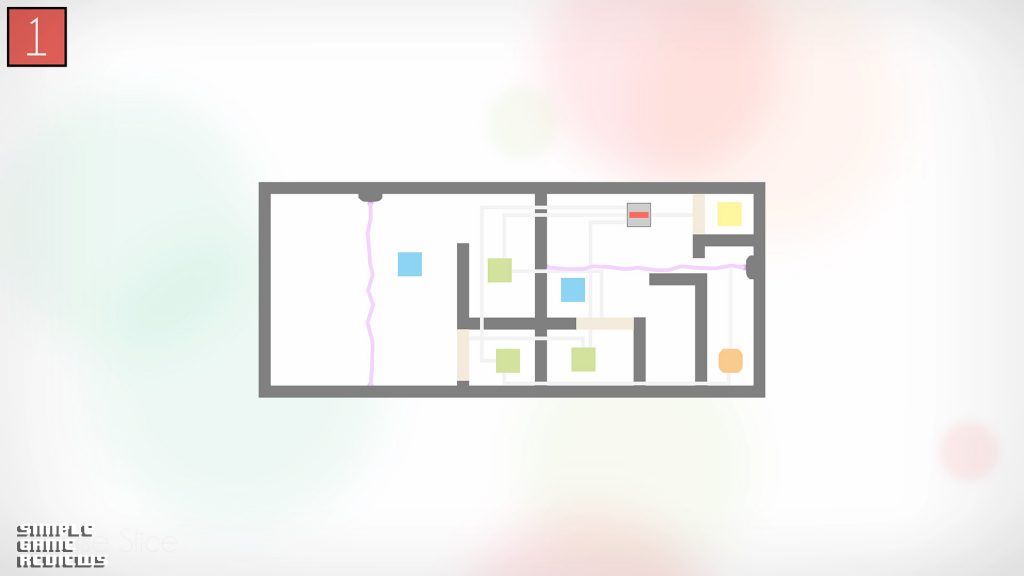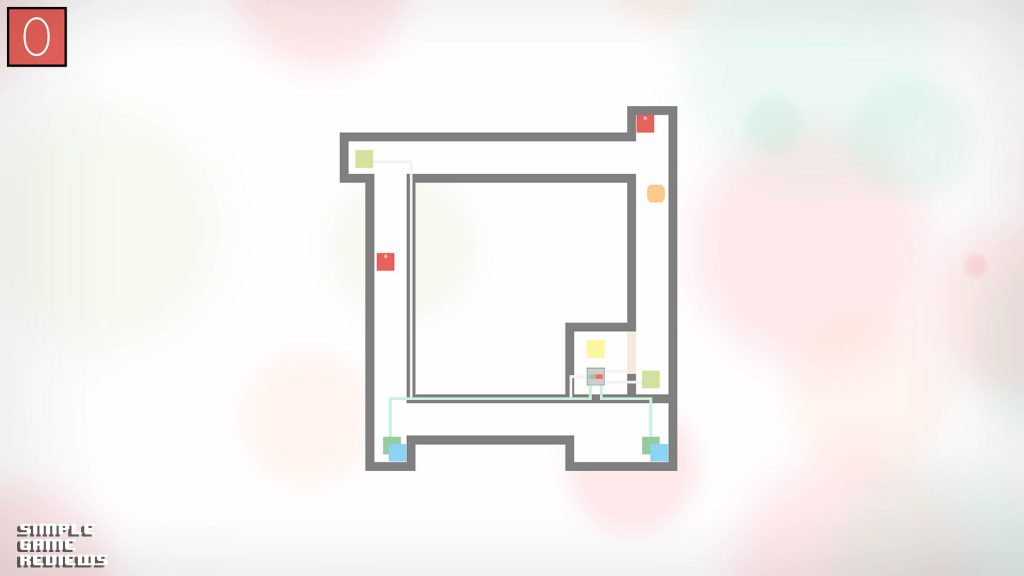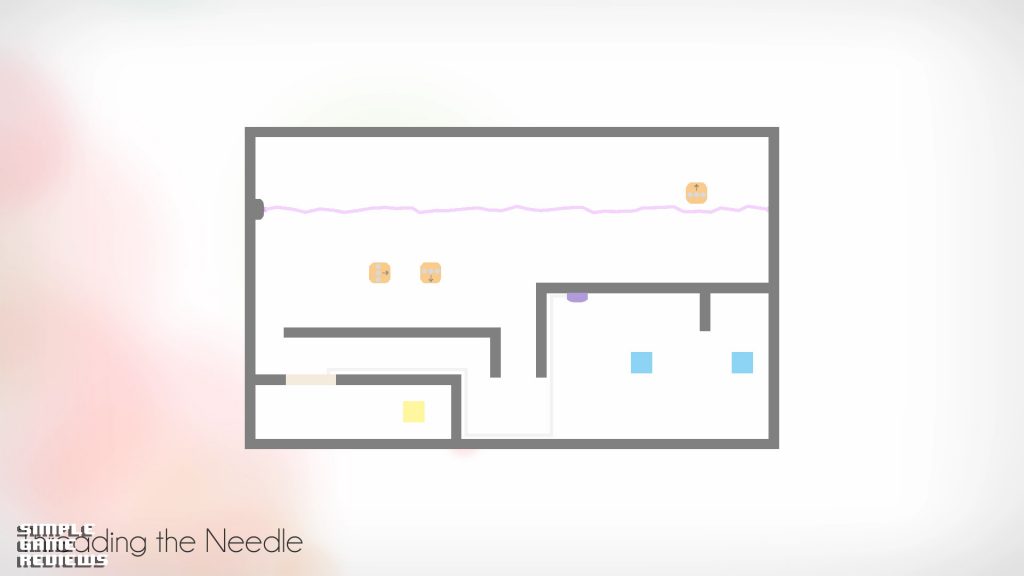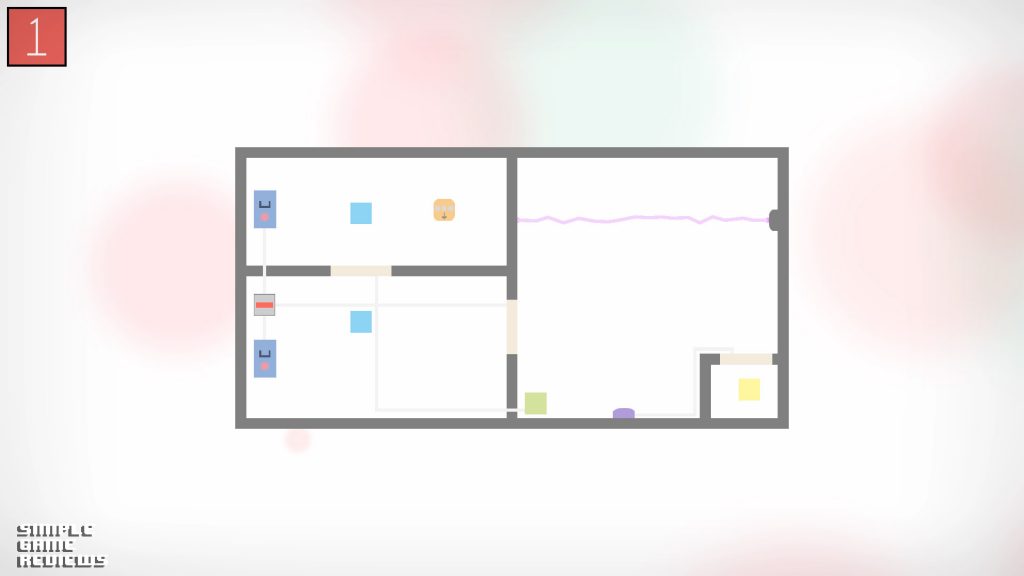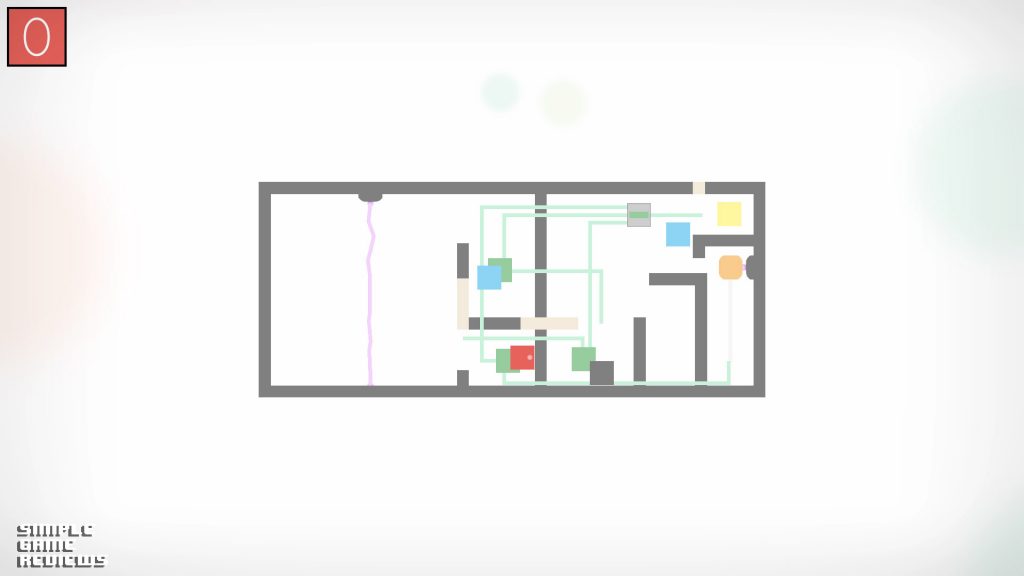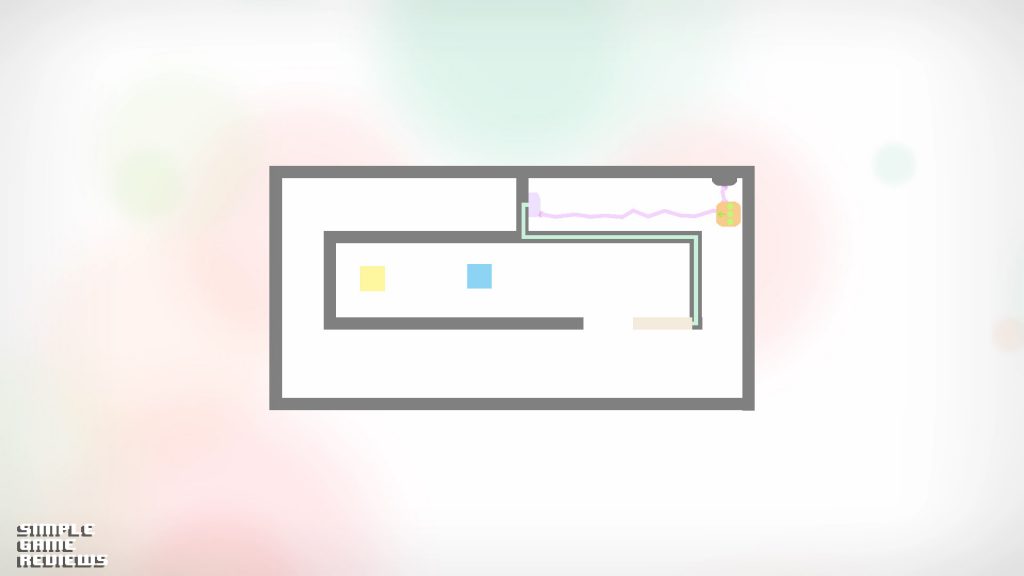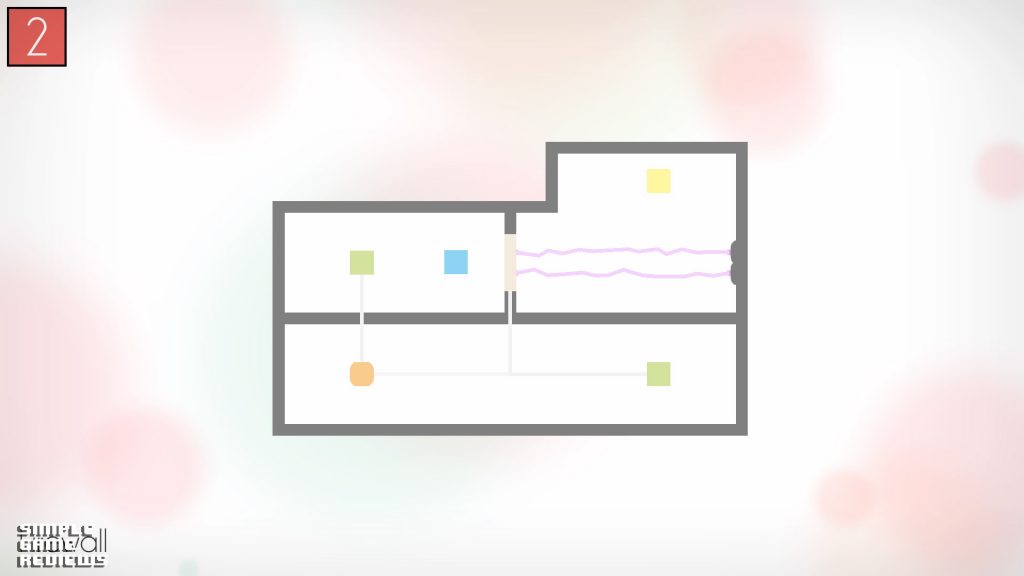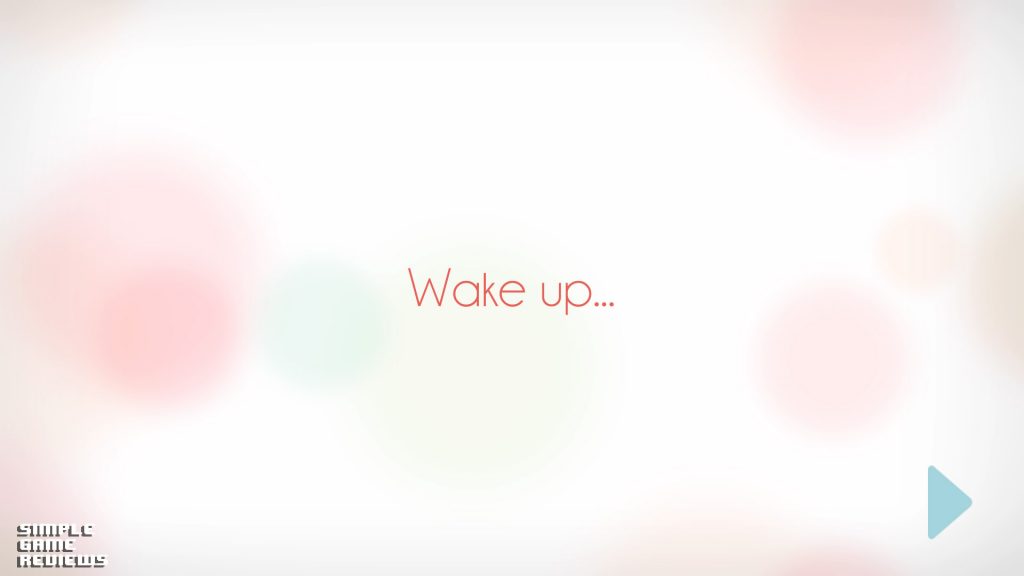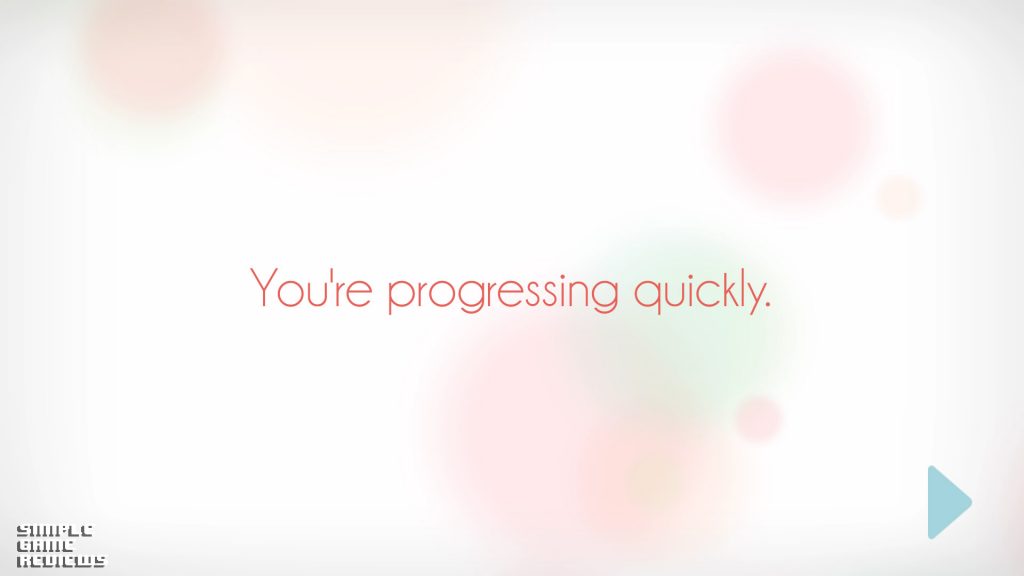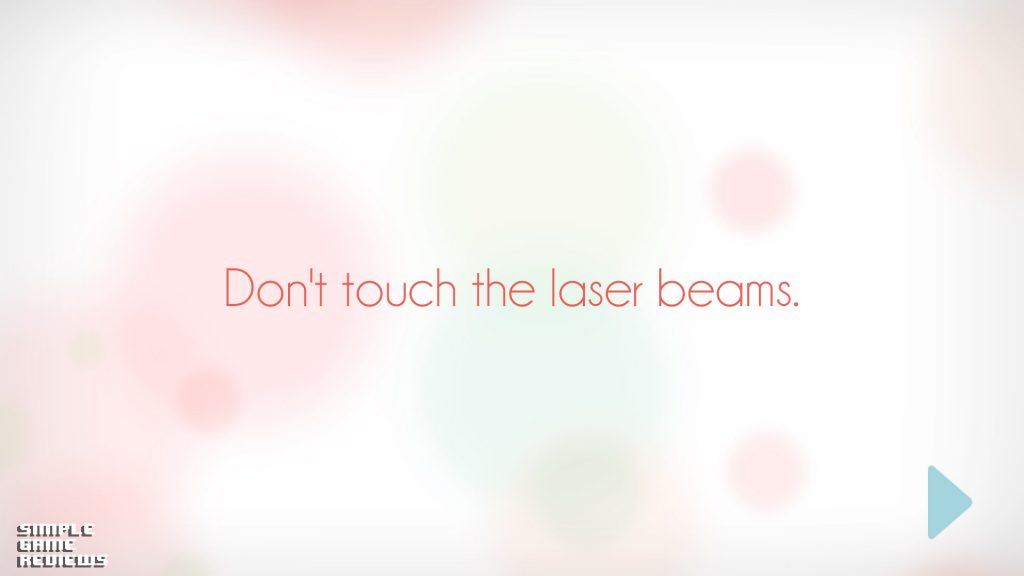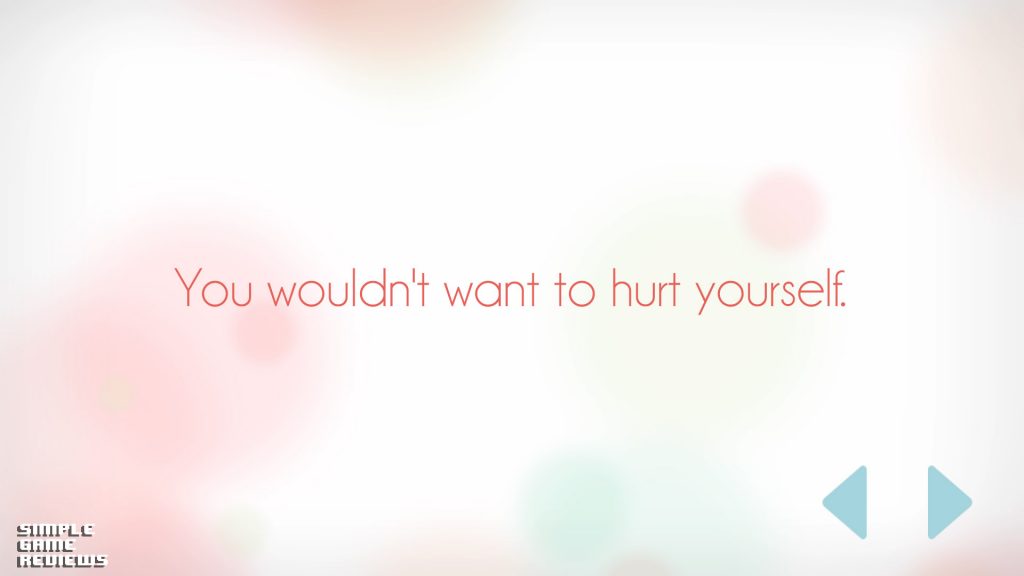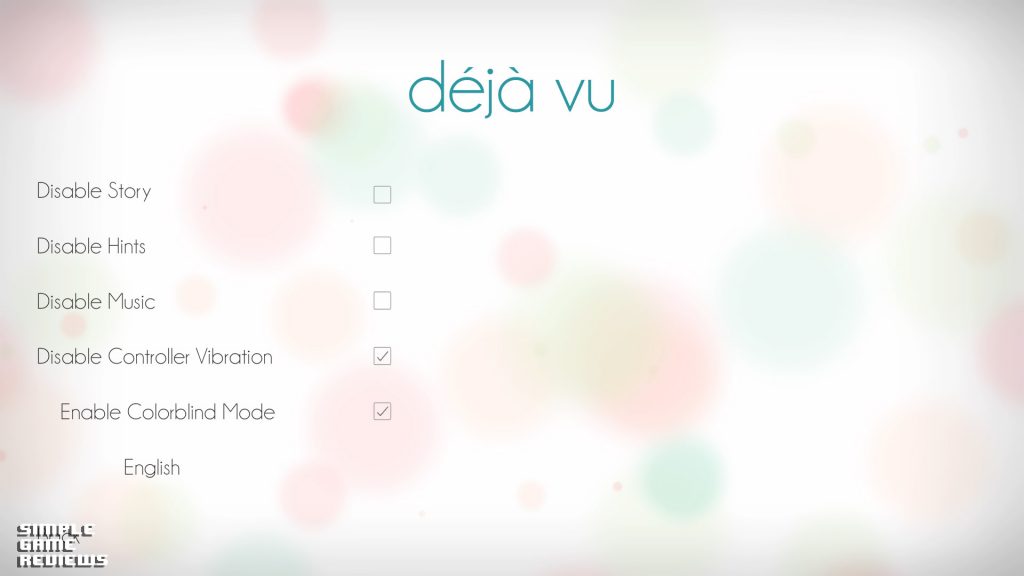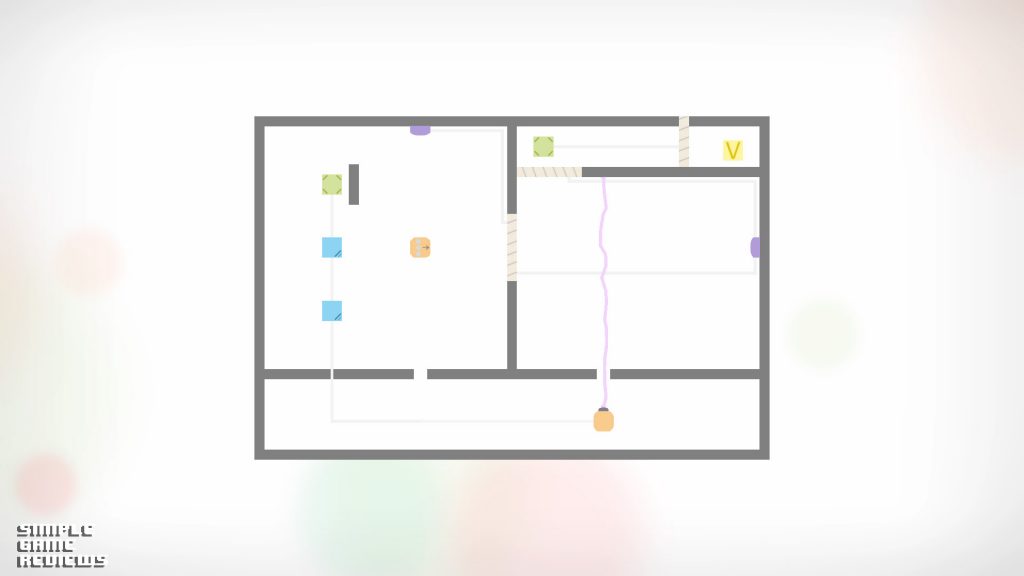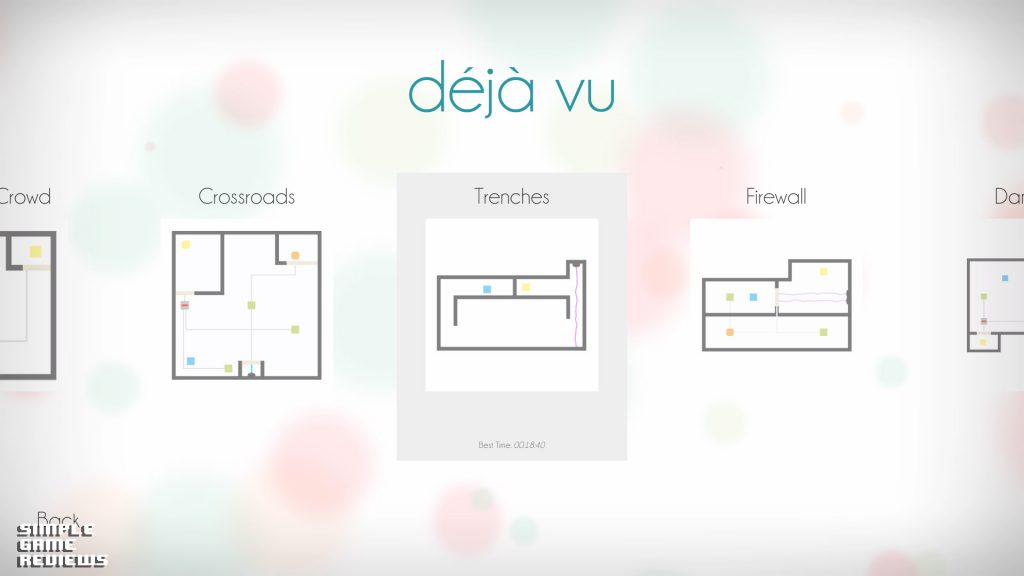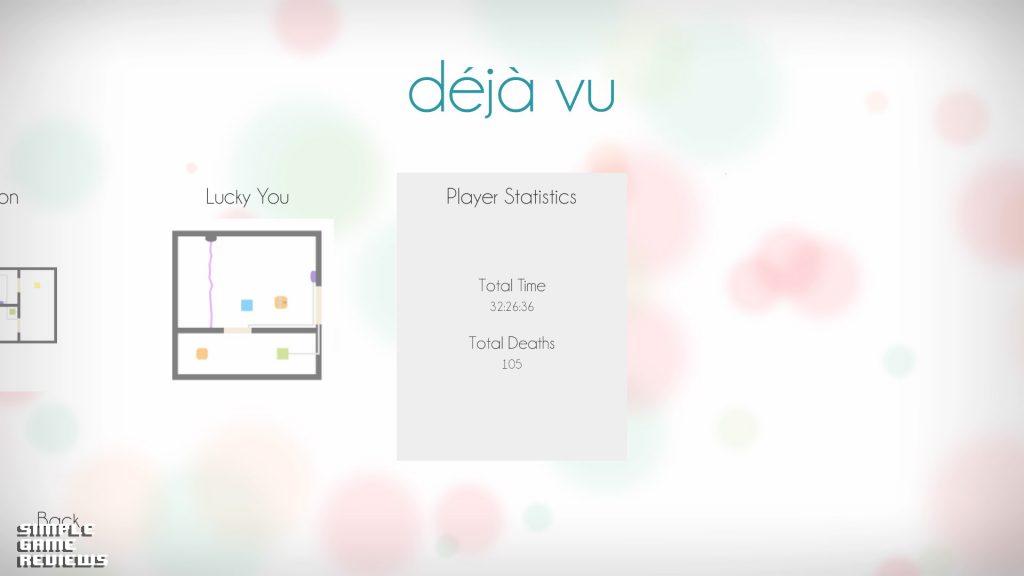Our Interview with Eric Freeman
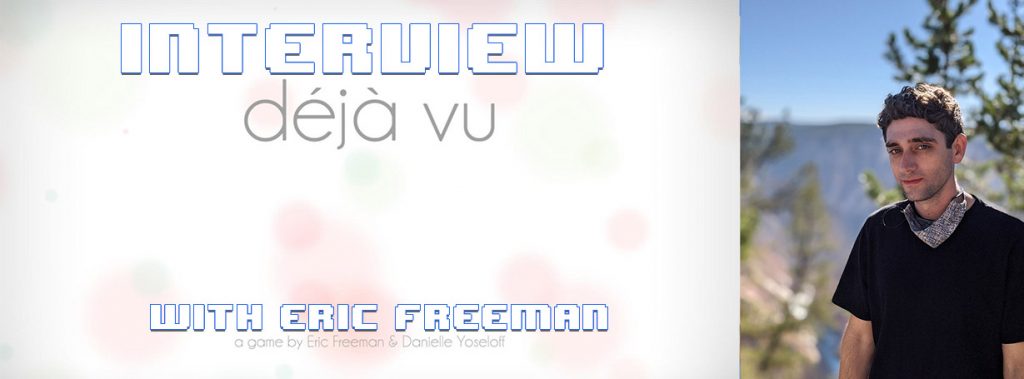
SGR: Today we’re talking to Eric Freeman, he is the developer and producer for the minimalistic puzzle game, Déjà Vu, available on Xbox and PC. So, Eric, can you tell us a little bit about yourself?
Eric: I’m 29 years old. I live in Utah. I am a programmer by day and I really like making Unity games by night. So that’s where Déjà Vu came from.
SGR: What got you interested in writing games?
Eric: I was nine when I first started. My parents didn’t like video games to begin with. They thought they rotted your mind, but I was allowed to program my own and play them. So, there we go.
SGR: Nice! A little loophole for you there.
Eric: Yep just had to make my own.
SGR: So you were nine when you wrote your first video game?
Eric: Um, I wouldn’t call it a video game, but yeah, that’s when I first got into coding.
SGR: That’s really cool.
Eric: Thank you. Yeah, I started with just modifying text-based adventures and changing the names of enemies to different things and changing the room descriptions. But then I started learning about if statements and for loops and all that kind of stuff and just took off from there.
SGR: Gotcha. That’s really cool. I’m guessing that was probably all PC games since consoles were pretty hard to edit back then since they were on cartridges.
Eric: Yeah, all PC games. A lot of the basic programming languages, I used Blitz Basic mainly, but I also touched on a couple of others, like Visual and Liberty Basic, but Blitz Basic was the best.
SGR: So, you started with a text-based game. You’re familiar with Zork, I’m guessing?
Eric: Yeah.
SGR: That’s awesome. I played those a long time ago.
Eric: Nice. My favorite text-based game is Frederick Pohl’s Gateway. I feel like not enough people recognize that game, but that was one of my favorites.
SGR: What was the inspiration for your game?
Eric: Have you ever played the game The Swapper?
SGR: Yes.
Eric: I played that game and where I thought they were going to go in the end, where it was like, Oh, you know, who are you? Are you like the clone? Cause you’re switching back and forth with which clone you’re controlling. So, did the real you die at some point during that game? And then they didn’t really go there in the ending. I was like, “Hey, what if I made a game about clones that talked more about that?”
SGR: Where did you come up with the name Déjà Vu?
Eric: Well it just sounded nice because in French it translates to “already seen”. So, it’s clones that are doing the patterns that you just did. It just worked.
SGR: Yeah. That’s kind of where I thought it came from. I really liked the concept actually. And the name tying in with it. That cloning mechanic seems to be really central to solving the majority of the puzzles.
Eric: Yeah. One of my biggest regrets with the game is that we didn’t introduce the cloning mechanic earlier. I think a lot of people get put off when they’re starting out in it and it’s just kind of generic Sokoban-ish type puzzles one after another. I probably should have introduced the cloning mechanic early and then had the other mechanics (lasers, switches, etc) tie in with the cloning and not just introduce all the boring generic stuff and then get to the meat of the game.
SGR: I don’t know. I feel like the mechanics built on each other pretty well. Because you’ve kinda got to introduce some of those basic mechanics since there’s not really a tutorial. The game is its own tutorial. So you’re really walking us through the process of “what is the objective here?” “put the blue square on the yellow square.” Okay, cool. You know? And then “how do I navigate?” And “introducing switches and doors and movable blocks.” I thought that you actually built on the mechanics very well. You kind of have to understand what those basic mechanics are before introducing cloning and how to use it.
Eric: Yeah, there’s a big balance there. I didn’t want people to think it’s just a generic Sokoban type game and then not actually get to the fun part.
SGR: Yep. There were a couple of puzzles that were kind of challenging. I’m not going to lie. I’ve beaten the game several times but Switchboard was a challenging level. Figuring out the key to opening the doors and the delayed clone movement was awesome.
Eric: Object in motion stays in motion. It applies even to a clone.
SGR: Yeah, pretty much. I used aspects of that mechanic on earlier levels, but introducing doors to function as a temporary stop to that motion, that was a new mechanic on this level.
Eric: I’m glad you liked it.
SGR: I really liked the music that you chose too. Did somebody make the music for you or did you find it somewhere?
Eric: I made it. Well, I worked on all the songs. The main menu theme Danielle helped me a lot on. I just realized I haven’t even talked about her yet. Déjà Vu wasn’t just a solo game. My girlfriend Danielle helped tremendously with a lot of the puzzle design. She helped out in the music, a lot of the story too, editing the chicken scratch I wrote into an actual fleshed out story. So, she helped a lot. This was a two-person project. But yeah, we did the music together. The main menu theme is a remix she did of one of my songs. Then I did the background track. On Xbox there’s also like the third piece that plays on that user engagement screen where it says “press any button to continue.” So, it was just those three songs in the game.
SGR: Awesome. Well, you guys did a great job.
Eric: Thank you.
SGR: I mean really, it’s very nice music. I don’t mind having it just kind of playing in the background, you know? Which is good, especially for a puzzle game where sometimes you can get a little frustrated trying to figure things out in a puzzle and dying, you know, a hundred times.
Eric: Yeah. Just had to be a little calming and fill the empty space.
SGR: I’ve played several puzzle games and one of the parts that you guys did really well with the music was that whenever you restarted a level, it kept the music going. You didn’t get to hear the same thing over and over and over again. I mean, several other games every time I would restart a level it would restart the song and I’m like, “I’ve heard the same 15 seconds over and over again.” because I keep dying and it was really nice that the music in Déjà Vu was seamless and just kept playing.
Eric: Yeah, making sure the restarts were super-fast and seamless was important for a game like this. Something like Hotline Miami where you die constantly was kind of the inspiration where you press a button on a controller and it just takes you back in a split second seamlessly. Because we really wanted trial and error to be a big part of the game, every level, once you kind of get the solution, can be solved in a couple of seconds. So, we wanted to make sure that death is not a big deal. You just press B and you’re back to normal. Getting hit by a laser, that’s fine, you know, messing up, making a mistake, you can get back to it as quick as possible to make it as least frustrating as possible.
SGR: So, what is your favorite moment of the game
Eric: Probably the ending. I feel like it’s hidden in there where the font color changes and I feel like not enough people noticed that. Do you know what I’m talking about? Getting the story right, a lot of people said that it seemed kind of abstract…and it totally was. We wanted the story to be minimal. In earlier versions it was a little more overbearing and there was a lot more wordy and it didn’t fit with how simple the rest of the game was. So, we tried to cut out as much as we could to make it so the story is still there. And we explained that with changing font colors and sound effects that really help tie it together in a weird way. But I swear there is a whole story there.
SGR: It was so subtle I didn’t catch that. And I’ve done this a lot of times.
Eric: I feel like most people didn’t, which is fine. I mean a lot of people guess what happened at the end without it. But I remember like one of the posts on the TrueAchievements website, which is one of the few places where I found people actually talking about my game, which was cool, but one of them asked, “Hey, what happened at the end? I don’t really get it.” And so I went into detail there about, “Oh, you need a notice the font colors and what they mean.” And then in a spoiler text I explain what that means. But yeah, font color is important in this game.
SGR: That’s cool. I’ll try to keep an eye out for it on my next playthrough. I guess that is the Easter egg isn’t it? My next question was asking you about Easter eggs in the game. So that just kind of go straight into it. Sounds like font color is the answer.
Eric: Actually, there are a few hidden mechanics throughout the game. I wouldn’t say any Easter eggs, but another one that people don’t really notice is, you know the level with four laser beams, going back and forth?
SGR: Yes.
Eric: So, a lot of my play testers were family members who aren’t very good at video games and that level really stopped a lot of them. But that level, the laser beam is actually slowed down by 5% every time you die on that level only. As long as you persevere, you should be able to beat it because eventually they’ll stop.
SGR: Yeah. I had a little bit of trouble with that one myself. I think I died, six times maybe trying to finish that one.
Eric: I try to make it really subtle where you wouldn’t notice. When a game has adaptive difficulty, you don’t want the player to know all of a sudden now they’re playing on easy mode because it’s like a slap in the face like, “Oh geez, I wasn’t good enough to play this.”
SGR: Right.
Eric: So, I slow them down by 5% every time you die. So eventually after a few times you wouldn’t even notice that they slowed down, but then when you get to the exit you’ll think, “Oh wow, I’m the best! I conquered this game!” They’ll actually reverse and just run off the map if you die enough times. I left that bug in because I thought it was funny.
SGR: I love that you did that. That’s really fantastic. It helps the game be more accessible to less skilled players. I noticed that you mentioned TrueAchievements, which is basically a site for gamer score and stuff like that which actually leads into my next question about what inspired the choice for the names of the achievements in the game? Specifically, the “lmao dead” achievement.
Eric: Yeah. LMAO dead. That was actually a Snapchat caption I got from Danielle and I thought it was a really funny caption. So, when I was trying to think of achievement names like, “Oh, if you die enough, why not use that LMAO dead one”. The name just came from an inside joke between Danielle and I. But, one of my favorite achievement names that are in the game is the “new clone, who dis?”, I thought that was a good play off of “new phone, who dis?”
SGR: Yeah, I liked that one too.
Eric: I tried to have a little bit of fun with it. Oh. And I used the open game achievement just to track how many people have actually opened the game because I didn’t want to put in any kind of third party tracking analytics. Then you need to have privacy policies and all that kind of stuff pop up and agree to it. “Oh, you’re being tracked when you play this game.” But you already agreed to those when you were playing on Steam or Xbox and so it’s out of their systems. So, I just put an achievement for as soon as you open the game just so I can see how many people bought the game and then actually opened it. Right now on Steam 15% of the people who bought it haven’t opened it yet. Which is cool because I like free money so I’m glad they bought it, but I do hope those 15% of people play it.
SGR: Yeah, so it doesn’t just “sit in the library collecting dust.” I actually liked that you added that as the description for the “Opened Game” achievement. Speaking as a fan of achievements and as a completionist, part of the time I hate it when there’s one that pops up immediately. I’m like, “but I didn’t like the game, but now I need to finish it.” I kind of get the idea, as the game developer, you want people to play your game. So it kind of draws you in with something that pops up immediately and then hopefully they’ll go on to finish it and enjoy it. The achievement description you used actually made me chuckle and curbed the annoyance I would typically have from the immediate achievement unlock.
Eric: Yeah. And you really should be front-loading those types of things to really make them engaging. I remember I was talking to somebody who worked on the Toy Story 3 video game and they said saying since it’s mostly kids, they needed to have achievements popping up all the time in the beginning so that they’re really invested in it. Like, “I complete one more race and I’ll get some more achievements.” So yeah, I tried to do that, especially with the text in between levels. We had to have it pop up after a really tough one, so it’s a reward, and then at the beginning it was every two or three levels we’d have another one just to like say, “you’re making progress” “the show’s going on.” It’s not just 50 boring puzzles from here on out.
SGR: Are there any parts of the game that you wish you could’ve kept in the game, but had to cut for some reason?
Eric: There’s nothing that I wish I could’ve kept in, but there was at one point saw blades in the game that would like bounce around on the walls. The physics were not very deterministic. Deterministic basically means, “if you simulate something, whenever you have the clone do it, he’ll do exactly what the player did.” The saw blades would bounce differently some of the time though. So, we changed most of them to be levels with laser beams because it’s the same kind of idea. If you walk into it, your block dies, and saw blades blocks paths. There were only one or two levels with saw blades that got taken out just because of physics problems and couldn’t have been changed into lasers. But I didn’t necessarily like them. I was happy to cut them.
SGR: So good cuts.
Eric: Yeah. Good, good cuts. But, yeah, it was really hard to just come up with puzzles in the first place. We didn’t want to cut anything really. We want to make sure that every puzzle was either adding something new or using a mechanic in a new way. We didn’t want it to be, you know, like Minesweeper. You already know what the mechanics are after the first level you play. So, we didn’t want it to just be repetitive like that. We try to add something new. It’s hard to come up with new, fresh ideas using the existing things.
SGR: Yeah. Overall, I think you guys did a really good job with the difficulty progression as well as, like, making them interesting. Something else we liked about your game is that you added a color blind mode. Your game is very bright…
Eric: Yes, it is.
SGR: …did you guys consider putting in a dark mode? What led you to choose such bright colors?
Eric: Yeah. So, what led us to choose the color scheme was actually the movie “Her.” I really liked the pastels in there. So, I was like, “Oh, when I make a game, I’m just going to use pastel colors” and then when I was working on Déjà Vu, it’s just a bunch of boxes and squares or whatever so it just kind of kept going with those pastel themes. But, yes, I definitely want to make some changes to make it more accessible for people with photosensitivity. We added the color blind mode after launch based on some feedback. And then, just yesterday somebody mentioned the photosensitivity, which I’ve never really thought of. Like, I know websites have dark themes now. I thought that was just because people like it, you know. So yeah, this is something that I totally missed and we need to probably patch into the game at some point. We’ll be trying to get that in as soon as possible.
SGR: That would be so Cool. So, any chance on more DLC?
Eric: Those first 50 puzzles were very hard to put together. I do want to, and we’re making jokes internally about that. Like, what would we even call it? And my favorite idea was just calling the sequel “Déjà Vu” again or “Déjà Two.” But, yeah, we did talk about a few more levels, but since they are so hard to put together, we were thinking about doing a pallet cleanser and something completely different before coming back to more puzzles.
SGR: That makes sense.
Eric: Sorry to disappoint you.
SGR: A as long as there’s something possibly in the works, I’ll be happy. Yes. What do you hope gamers come away with after playing the game?
Eric: I’d like them to say “Wow, that was a fun game.” It sounds cliché. I just want people to like it. I don’t really have any too deep meanings behind it really. You know, it’s not like Spec Ops: The Line where the players would come away with “war is bad” or something like that. Just “it was a good puzzle game.”
SGR: So I’m guessing you’re quite a gamer since you started kind of hacking games as a child and you’re mentioning a ton of games. Other than your own game, what is your favorite game?
Eric: Oh, geez. According to only steam hours, probably NGU IDLE. This is a tough one. I feel like it really depends on my mood because I have different favorites and different genres. If I’m playing a game with friends, I really like Borderlands. I put over 200 hours in Borderlands 2 during LAN parties, but, puzzle games…probably Portal 2 if I had to be honest. Although, Stephen’s Sausage Roll was another really good one that everyone should check out if they haven’t. Way harder than anything else you’ve ever played, it’s ridiculously hard. But yeah, I kind of go all over the place. I don’t really have a favorite genre. I used to play a lot of Counter Strike with friends. I’ve put tooons of hours into Mount and Blade: Warband and S.T.A.L.K.E.R. I go all over the place, shooters, slower paced games… just anything.
SGR: Hmm. Well, you mentioned some of my favorites already.
Eric: That’s good. Oh, and Euro Truck Simulator 2! You have to give a shout out to that one.
SGR: Do you have any projects on the horizon that you either could or would like to talk about?
Eric: Well, I started working on a shooter with Danielle. A retro throwback boomer shooter or whatever the term is for those now. But, I don’t really have anything to show off yet. It’s probably going to be the exact opposite of Déjà Vu. It’s going to be super fast-paced, very loud, very aggressive, and a real good palette cleanser from the slow-paced puzzles.
SGR: How long have you been in the industry as a professional and not just a fan?
Eric: For videogames or just programming in general?
SGR: I guess video games.
Eric: Well, this is our first major release. We started this project four years ago in 2016 and it’s been on and off for a while. As I said, designing puzzles is hard.
SGR: Yeah it is. I have so much respect and appreciation for the people who can create puzzles that actually make me have to stop and think, actually make me have to work, to figure out the solution.
Eric: Yeah. I honestly had no idea how hard it would be to make a puzzle game until I started this. I remember thinking like, “Oh, I’m just going to make like the simple top-down 2D game. I’ll have this done in no time.” I thought Déjà Vu would be a quick project…and 4 years later it’s released.
SGR: That’s awesome. And you guys are completely self-published?
Eric: Yep.
SGR: If you could give advice to somebody else who has those same aspirations what kind of guidance or advice or words of wisdom would you give to someone else that is where you were five or six years ago?
Eric: Download Unity and try to make like the simplest projects possible. Don’t try to make your dream project first because it’ll probably fail. Start with something simple, like recreating Flappy Bird. That’s a really good first project. You learn how to use input systems and on phones, you learn how to do the touch screen or gyroscope input. You’ll be doing UI stuff. You’ll be doing animation and all that kind of stuff. But it’s such a simple concept that you could get it done in a week if you follow the tutorials. So, start with really simple projects and then build from there. Puzzle games are hard. Just make a top down shooter first.
SGR: Those are great tips. Hopefully, they’ll help someone out there. Did you have in your head, like “this is step one” “this is how I want to end it” and then start building in-between? Or, were you just like, “this would be a cool ending” and then kind of work backwards?
Eric: For like the design of puzzles or for the story itself
SGR: Both.
Eric: Both. Yeah. So, the ending, we kind of had the idea for the ending pretty early on and then we were just filling in the parts in the middle. For the puzzles, normally what we would do is we actually drew them all out on paper first. We would just draw a box for like the level.
Then we draw where the start is and we draw where the end is. And then we just stare at it, say like, “okay, maybe it would be interesting if there’s a wall here blocking it in half.” So, then we draw the wall. I’m like, “well, they’re going to need to open that up.” So then drawn in a door, then had a button to open that door and then try to think like, “okay, well what would be the mechanic?” Just kind of build with pieces. You start with the beginning and the end and then you just try to figure out where you’re going in the middle. Sometimes you know you need the puzzle to use a certain mechanic like pushing dead bodies, so that makes the middle section easier to plan out.
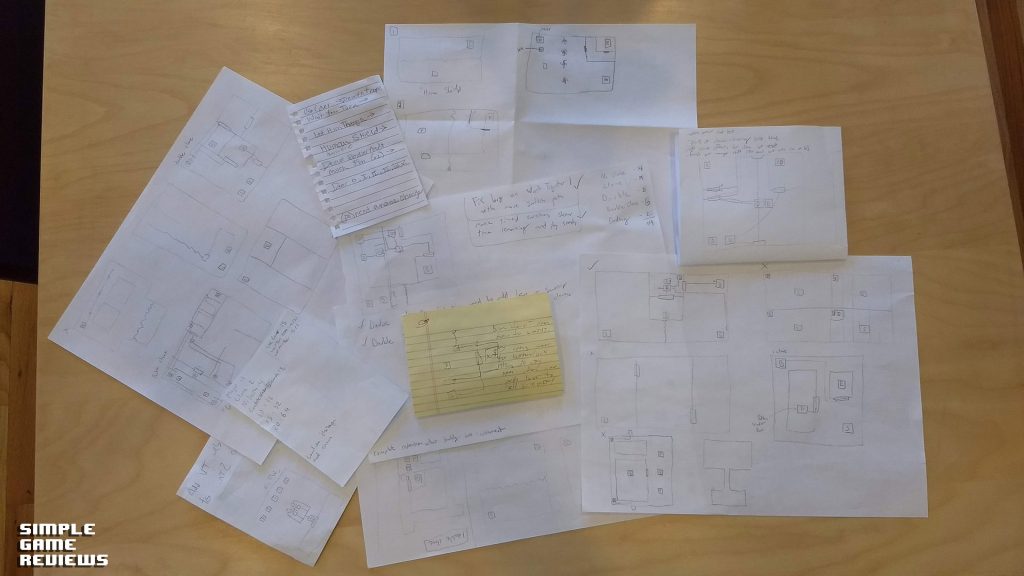
SGR: One of the things that I noticed is some of the puzzles actually seem to have more than one way to complete them.
Eric: Yeah. There’s some achievements for a few of those like, “don’t let anybody die.” A lot of the later levels weren’t play tested enough so I didn’t really realize that some of them were easier if you just kill off one of the clones in the beginning.
SGR: Yeah. That’s how I did it on one of the ones. And then I actually went to YouTube and I watched the videos. This one guy had this super complex thing and I’m like, “I just killed the clone and got them to block the laser.”
Eric: Yeah. For the level Crossroads, that was actually the way we intended it to be, because it was the first level where you realize that there’s a mechanic where you can push dead bodies around. I was watching one of my friends play test it and he solved it without doing that. So, I went back and added a secret achievement for if you complete it without using dead bodies. And then I added the level that’s directly after it were it was only possible to beat it by pushing the dead body. So that way, if somebody solved it the other way first, they would still know that pushing dead bodies is a mechanic in the game.
SGR: Oh, something I love the way you did was the laser redirect blocks. They’ve got the countdown on them to tell you how long you’ve got to get the hell out of the way before it points that direction. I thought that was really well done.
Eric: Well, thank you. They used to redirect immediately, but during playtesting it was obvious that was really aggravating having to push the blocks quickly and use the momentum to slide them into place while you have barely enough time to get out of the way.
SGR: Yeah. The first time I saw that I was like, as soon as I saw the laser hit the block and the three dots start to fill before it shot off, I was like, “that’s awesome.” That’s going to make this so much easier. Cause I noticed that same little bit of transference of momentum thing. And I thought I was going to have to use that somehow. And I was like, “okay, this is going to be hard.” And then when I saw that and I was like, “Oh! Oh, that’s nice. I like that.”
I really enjoyed the pacing of the new mechanics. They came in right as the other ones were starting to be like, “okay, I figured this one out. I understand how to do this.” And then all of a sudden it was like, “BAM! new mechanic.” It kept me really interested in the game and wanting to play it. You guys did a really good job of introducing things in a way that kept it interesting and kept it from becoming too monotonous or boring.
We really appreciate you taking the time to talk with us about Déjà Vu. We wish all the best and can’t wait to try out the Dark Mode you mentioned.
Eric: It’s been great. Thanks so much.
You can read our Review of Déjà Vu Here
*At the time of the interview Dark Mode was not in the game but has been added to the Game in Beta form.

